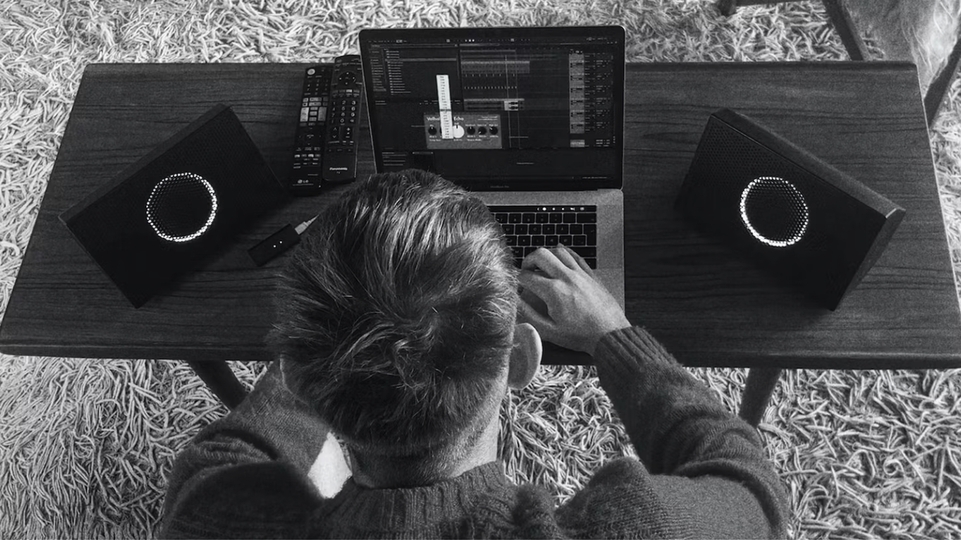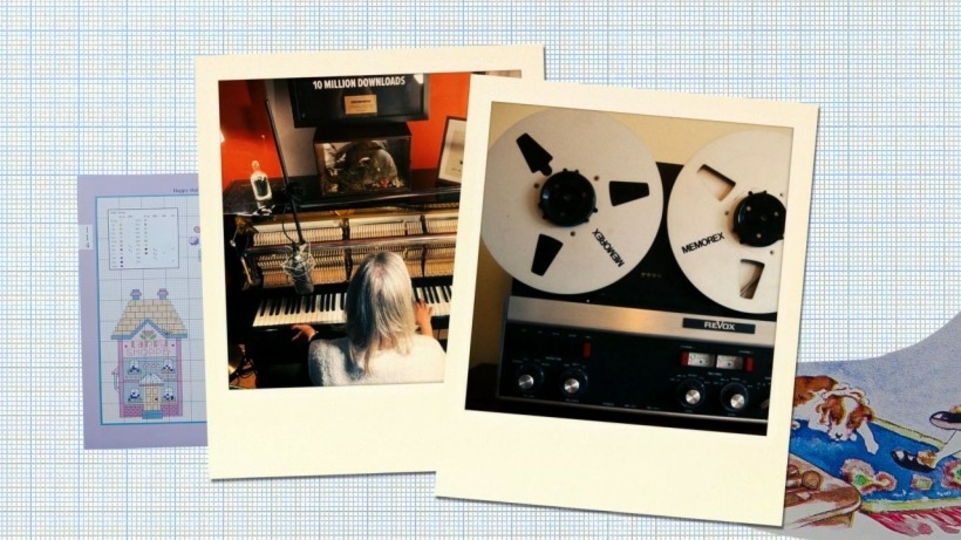
Studio Selections: Rian Treanor
The Yorkshire-based sonic sculptor reveals the custom-made software behind his Planet Mu album 'File Under UK Metaplasm'
Rian Treanor’s new album – ’File Under UK Metaplasm’ – released on Planet Mu in 2020, made a sonic splash, not just for its controlled chaos, disjointed harmonies and lush soundscapes themselves but for the custom-made sound design tools behind them. The album received praise across the board – including being awarded DJ Mag’s Album of the Month – and the unique textures and tones, as well as the creative use of sequencing had us wondering what studio trickery went into the LP. While our Studio Selections feature is usually full of studio hardware or plugins, this month it’s slightly different as Rian talks us through the custom-made Max/MSP devices he built for his album, how his ideas come together and his new project bringing creative music-making tools to the masses. If you're not sure what Max/MSP is, you can find out more here.
“I mostly use Max/MSP for making patterns, sort of like MIDI data that I then send to synths and samplers. I make bespoke devices like drum machines, sequencers, chord generators, modulation devices or more algorithmic processes. My main interest is in designing systems to explore extended rhythmic techniques and tools to enable spontaneous and impulsive pattern modulation in live performances. These can be simple processes or modules that do one specific thing, or they can be linked together to create more complex systems.
“Here are a few tools that I use in various combinations and some bits that I used in my new LP — ‘File Under UK Metaplasm’ – on Planet Mu 2020.
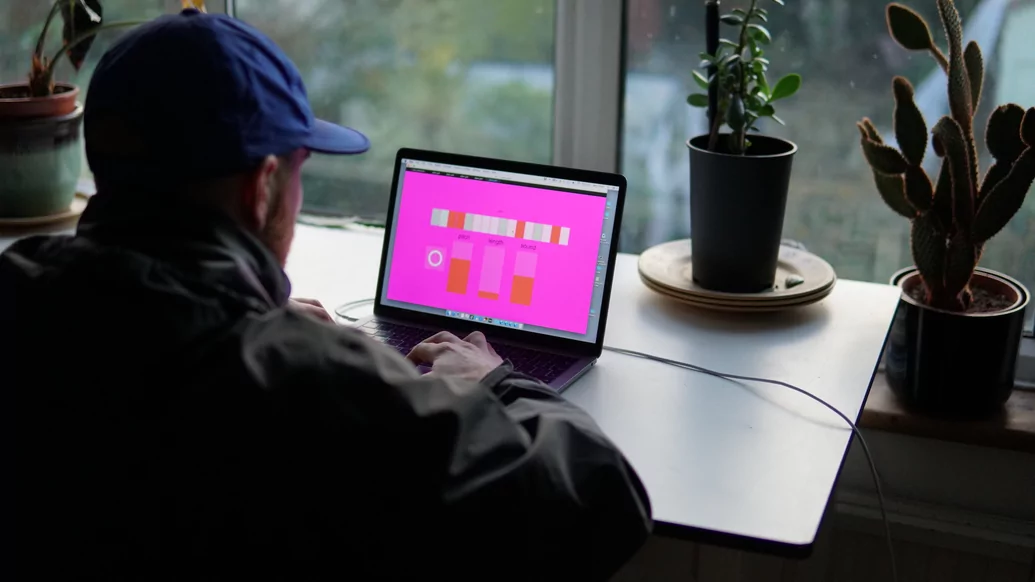
“I didn’t study music theory or computer programming, I came at this through DJing and making techno using computers, trying to get my head around rhythmic relationships and structures within music. I’m into learning more about how things are made and it’s like the further you go the more there is to learn. Max/MSP is a really great tool for figuring out how to build things from scratch and try to get to grips with things at a lower level.
“Historically these types of processes are mostly used in academic contexts but they can be used in dance music and in clubs. My approach isn’t so theoretical, to be honest, it’s more like seeing what happens when you connect this with that and go from there because Max/MSP uses objects that you connect with wires, it sort of allows you to test things in that way. Each object has a help file so once you get a feel for how it works you can start to chop things together. It’s sort of like Lego.
“I find lots of new directions and ideas open up through the development process, I’ll spend ages making one type of device and I keep recording things as I go. Once I’ve finished it I’ve ended up making a bunch of new music with it already.”

“I make so many different types of step sequencers. They are a pretty fundamental starting point in electronic dance music so I’ve got to include one here.
“This one is based on Euclidean patterns which are commonly used in all sorts of music. Its basic principle is to evenly distribute events – beats – within a cycle and can be used to create amazing interlocking polyrhythms. But one thing I find is that because they are based around evenly distributed events they tend to be really straight and are sort of rigid. At least when it’s not being played by hand anyway. I am way more interested in asymmetrical patterns. This device uses the Euclidean algorithm but disrupts it a bit.
“It basically divides a cycle into equal sections, then it evenly distributes a specified amount of beats into each section using the Euclidean algorithm. Each section is then offset randomly and one extra beat is added to every other section. It comes out with some interesting Clave type patterns like two then three-type rhythms, when you use three channels together it has a great asymmetry to it. To be honest, the Euclidean element is a bit redundant in it now but it comes out with nice patterns. I guess it’s a nice balance between randomness within a very determinate structure.”
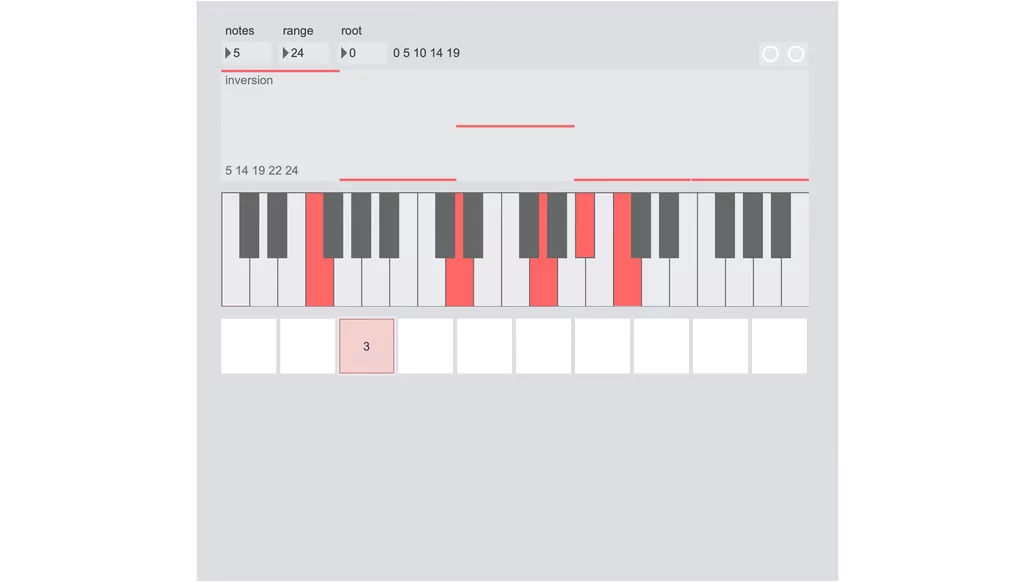
“This is another device that uses the Euclidean algorithm but it’s for distributing notes over a specified range. You can use it to make some really unusual scales and chord structures. I can kind of get it to make all sorts of modes and major / minor scales. It’s really versatile. I use it in loads of tracks, it was the main pitch component to the track ‘Mirror Instant’ off my new LP. I use it in a lot of improvised and collaborative music too, I think I developed it for a gig I did with Karl D’Silva in Sheffield for a Mutualism event in 2018.
“I’ve not really seen this process used like this before but I guess Euclidean patterns are related to the harmonic series, I dunno exactly. You can use a similar principle but with floating points to do interesting microtonal stuff. It’s essentially really simple though, it only really uses three variables — you specify a range, then how many notes to be evenly distributed within that range and specify the root note which just transposes it all up or down.
“Then using that slider that’s labelled ‘inversion’ you can change the transposition to invert each note in the scale and get it to generate variations and chord progressions. The buttons at the bottom are for storing presets and can be used like keys to trigger different chords – I’ve got them set to my number keys on my laptop so I can play them in by hand. It works really nice.”

“This is a bit more complex but something I use loads. It’s a semi-modular system that links together three algorithmic processes to modulate ‘clock’ data. It’s sort of like the Bastl Little Nerd Eurorack module in a way. It’s incredibly flexible, I use it to do all sorts of weird things like modulate timings, make arpeggiators and do erratic fills but you can also use it as a straight sequencer too.
“Technically speaking the clock input is processed by algorithm 1, then it goes into algorithm 2 and then algorithm 3. Using the menu below each slider you can select the various algorithms. These are relatively simple on their own but together you can get really detailed with it. These are the processes that it includes: Divide, Multiply, Modulo, Accumulate, Subdivide, Repeater, Random output, Euclidean, Probability, Groove, LFO, Sequencer, Tala.
“For example, it can get really interesting when using the Tala (a rhythmic process used in Indian Classical music), then going into a Subdivider, then into Probability or something. If you then shift to using a different set of algorithms it completely changes it up but it feels like one continuous thing. It’s an insanely versatile little tool, you can sort of get it to do anything you want really.”

"It’s a nice balance between randomness within a very determinate structure"
“I make loads of devices for pattern modulation, I wouldn’t say any of them are totally new or anything but they are so much fun to play with. I do basic things like multiply or divide a pattern, or using multiple patterns and adding them together or subtracting, or doing more interesting stuff like interpolating or using weighted mixing of patterns, so using a percentage of pattern A B C etc. One thing I’m really into is wave shaping but with melodies.
“The one in this screenshot is dividing the input pattern and then it’s going through a wave-folding type process. It’s so satisfying to see the melody modulating when you move the dial, it all expands and contracts and folds back in on itself. It creates mental inversions that shift and reflect each other, I used this process in the Debouncing track to transpose the melody / baseline. You can also use it to control anything tho like CC messages or synth parameters. I used something similar in the synthesis in the ‘Closed Curve’ track off my new LP.”

“Over the past few years I’ve been doing more workshops with young kids, older people and non musicians. I’m really interested in designing musical devices that anyone can pick up and play, basic interfaces that are simple to use so you don’t need any training to have a go.
“I started to focus on this more over lockdown, some recent projects include workshops with a group of 10-11-year-olds at No Bounds Festival in Sheffield, a commission by Les Siestes Electroniques with a group of 80+-year-olds at a retirement home in Paris. I’m currently working with the students at a school in Croydon to develop a new remote live set that will be presented at the AGM event at Somerset House on the 12th Nov.
“This work came out of a new collaboration with the artist Mark Fell where we are developing a new system that enables remote participation in various forms. The basic principle is that people can download a standalone app and play together in real time over a network. We are working on a number of different outcomes, including workshops, live performances, installations and critical discussions that we are calling ‘Inter-symmetric Works’.
"I’m interested in exploring ideas around networks, like how can the actions of one player affect the actions of all"
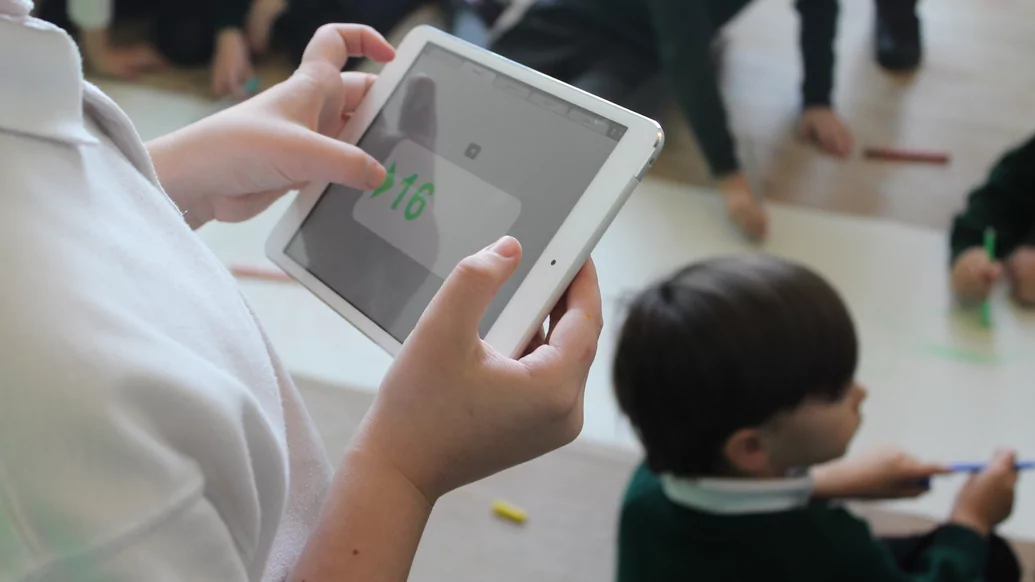
“The main focus is to create participatory new works that explore ideas around networked interaction. Where people can take part in actively making something together, instead of just going to a venue to be an observer of something, it’s like saying to the audience: ‘There you go, there’s a drum machine and PA, go for it’.
“The creative thing is how to design something that enables a sort of meaningful form of communication or connection. Using rule-based systems or algorithmic processes like in a game, so it’s not just a complete free for all and total chaos. I’m interested in exploring ideas around networks, like how can the actions of one player affect the actions of all other players – so if person A does this, person B and C can do that.
“We are thinking of it as an alternative to streaming, and for me, it’s way more interesting than just turning up at a venue and performing solo on a stage.”

